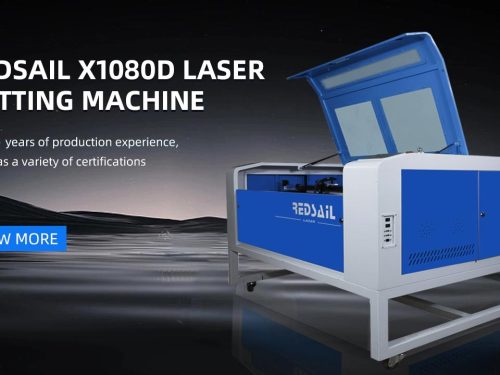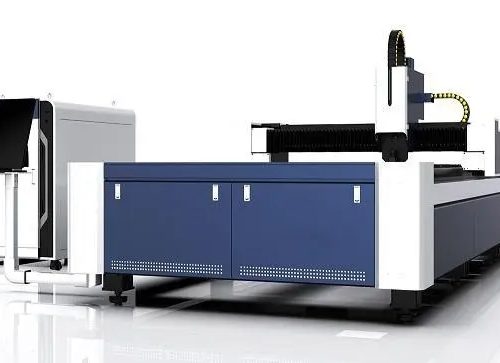
Whether you are an accomplished engineer or a novice manufacturer, learning the correct use of design equipment can avoid possible problems and errors and save time and energy. The problems that arise from time to time make designers do not know what they have done wrong or how to do better. This is true in any field, and laser engraving is no exception. Knowing how to avoid these mistakes and not repeat them is half the battle. With this in mind, let’s discuss the five most common mistakes in laser engraving and how to avoid them in future projects.
Error 1: when engraving fabric, the laser will burn through the material
The first step to avoid burning through fabrics when using laser engraving / cutting machines is to understand which fabrics can withstand this process and the temperature that the fabrics can withstand. Stronger fabrics such as denim, canvas and leather can bear higher temperatures when carving. However, for softer fabrics, the most important thing is that the initial setting speed is fast (close to or equal to 100%) and the power is low (about 5% to 10%). Test these initial settings on some spare materials to see if the fabric can withstand engraving with these settings, and gradually increase the power until you get the results you want.
When directly engraving clothing, reducing the number of points per inch (DPI) of the engraving area will help engraving. The higher the DPI, the more material will be etched. Engraving with a lower DPI ensures that the laser only slightly evaporates the surface material without completely burning through the fabric. Most fabrics can be carved well by controlling the DPI between 150 and 300.
Laser engraving fabric
Error 2: acrylic material cannot carve frosted white effect
This is most likely because the wrong acrylic material was used in the engraving application. There are two kinds of acrylic materials commonly used in laser engraving, and both of them are suitable for different purposes.
Acrylic casting plates and objects are made by pouring liquid acrylic into molds of various shapes and sizes. This type of acrylic is an ideal material for carving, because it will become frosted white when carving, and is suitable for making medals. You can also use a laser machine to cut such materials, but cannot form flame polished edges.
Another acrylic material used for laser engraving is acrylic extruded plate, which is a plate made by machine. The price of acrylic extruded sheet is usually lower than that of acrylic cast material because it is made by mass production process. However, when the laser engraving machine is used to engrave this material, the effect is quite different. This type of acrylic material cuts very clean and smooth and produces flame polished edges. However, the effect of cutting is not frosted white, but rather quite clear carving patterns. Therefore, if you want to get a frosted white finish, please make sure to use acrylic casting materials.
Acrylic laser engraving / cutting
Error 3: contradictory glass carving
In general, the laser irradiation on the glass will break the glass surface, but it will not deeply engrave or remove the materials required for complete engraving. Broken glass surfaces will produce a frosted appearance, but depending on the type of glass being engraved, it may be rough and chipped. Although the frosted appearance is ideal, no one wants a rough or notched engraved surface.
To produce a smooth matte finish, try combining one or more of the following tips:
With a lower resolution, about 300 dpi can produce a better effect on the glass when moving the engraving position.
Change the black in the drawing to 80% black.
Sometimes, laying a thin layer of wet newspaper or paper towel on the engraving area helps to dissipate heat and improve the engraving quality. But make sure that the paper is not wrinkled after laying.
Another way to dissipate heat is to apply a thin layer of detergent to the engraving area with a finger or paper towel.
Finally, if there are glass fragments after engraving, please clean the engraving area with a scratch free cleaning cloth.
Wood laser engraving / cutting
Error 4: wood engraving will get different results under the same settings
Wood is one of the most suitable materials for laser engraving, because it is not only simple to cut, but also has good engraving effect.
However, the response of different wood to laser engraving is different, and the results obtained are also different. When the laser ablates the wood, the lighter wood (such as cherry or maple) will produce very rich contrast; While cutting or carving stronger wood requires higher laser power.
Depending on the type of wood you process, the particle density will vary greatly. Cherry, alder, walnut and maple have very tight texture, while oak has medium to coarse texture. For example, if a large square is carved on cherry wood, the appearance will be very uniform, the carved area will be smooth and the height change will be small. However, if a square of the same size is carved on the oak, the height of the appearance will be very different and the appearance will be very inconsistent.
Here are some tips for carving wood:
Maple and alder are some of the most popular carved wood, which can form a rich contrast.
In the process of carving bare wood, smoke and debris may be generated, which may be embedded in the grain of the wood. In order to reduce this effect, always carve from the bottom to the top, which helps to absorb all the smoke during the carving process.
When carving colored wood, you can use a wet rag to wipe away the excess smoke and debris on the wood surface after carving.
Error 5: the operation speed of the laser engraving machine cannot be as fast as before
Clean your machine! Like other types of design equipment, a clean machine produces better results than a machine that is not properly maintained. Your laser user manual contains maintenance requirements. If the performance drops quickly, the first step to fix the problem may be to check and clean the optics.
We recommend that the optics (lenses and mirrors) in the laser machine be checked weekly and cleaned as needed. If the material you cut generates more debris, you may need to clean the optics more frequently. In general, the optical device should be clear golden yellow, bright and shiny. If they look blurred, or have stains and debris, it is time to clean them up.
conclusion
These errors listed above are very common among manufacturers and designers who use laser engraving machines, especially those who are just beginning to use these devices. But as you can see, these problems can be easily avoided if there is a sense of correcting mistakes.










